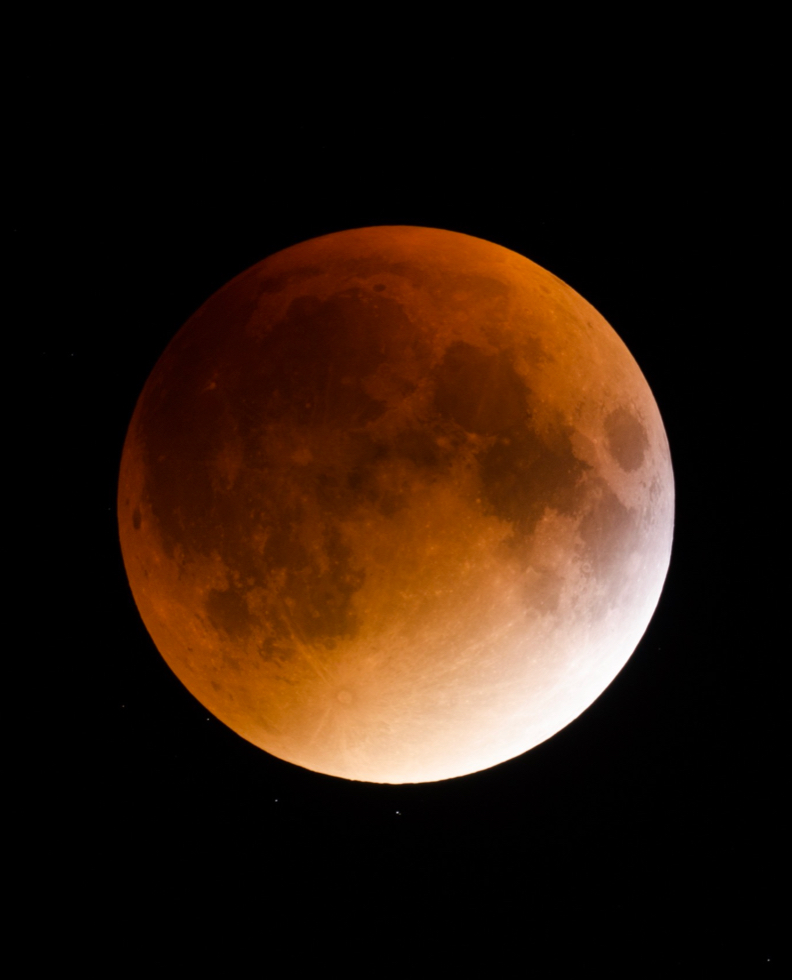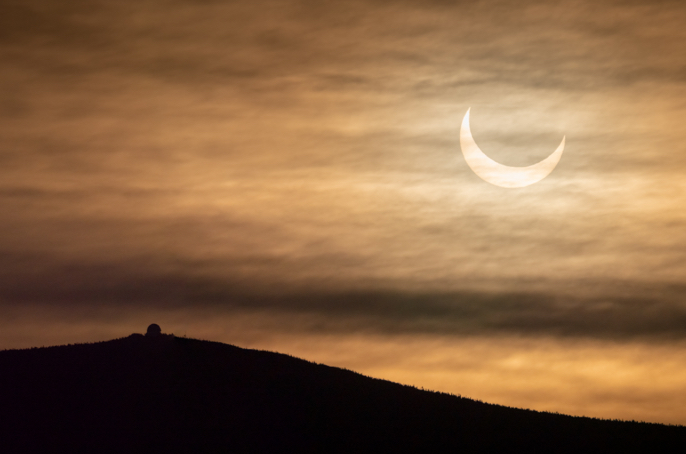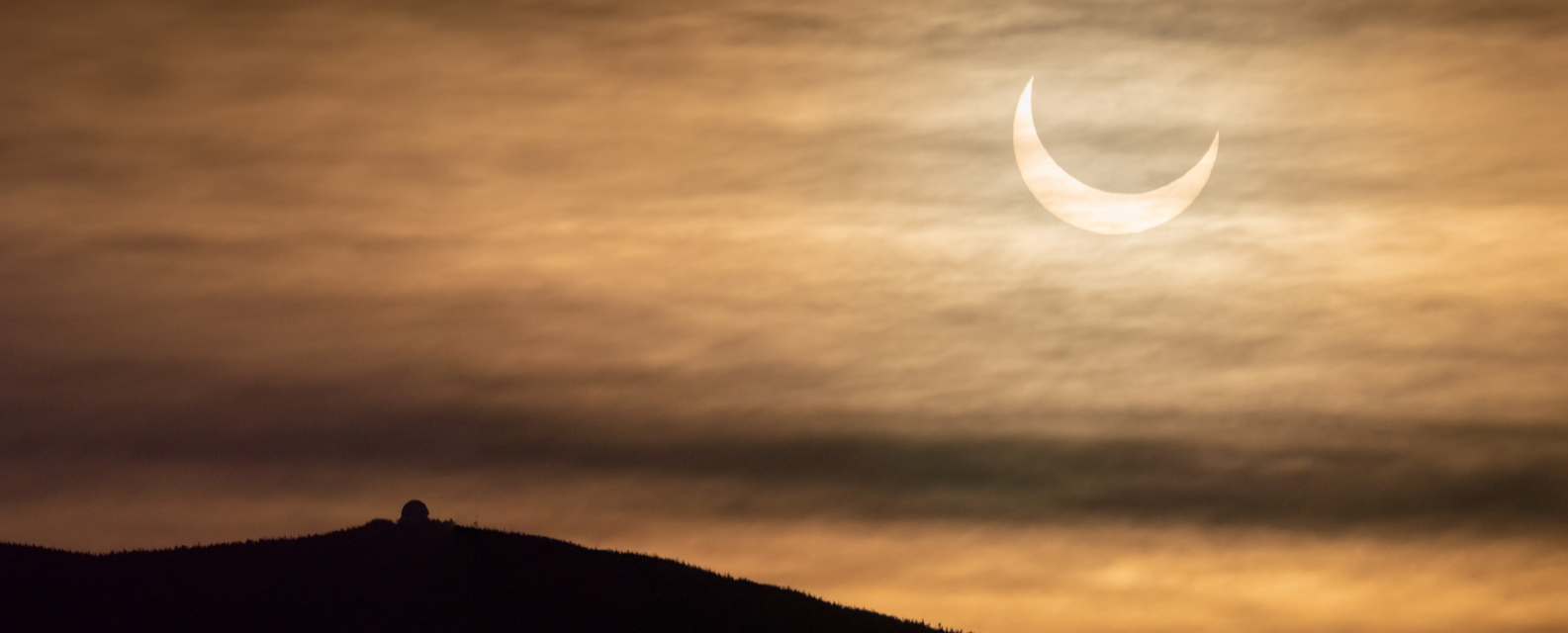

What does the universe have in store for us?
TOTAL SOLAR ECLIPSE of April 8, 2024
The next observable total solar eclipse will occur on April 8, 2024. It will be an incredible opportunity to witness this natural celestial phenomenon. You’ll need to do a little planning to avoid missing out!
Depending on your location, the eclipse will take place between 2:14 p.m. and 4:40 p.m., reaching totality around 3:25 p.m. or 3:30 p.m.
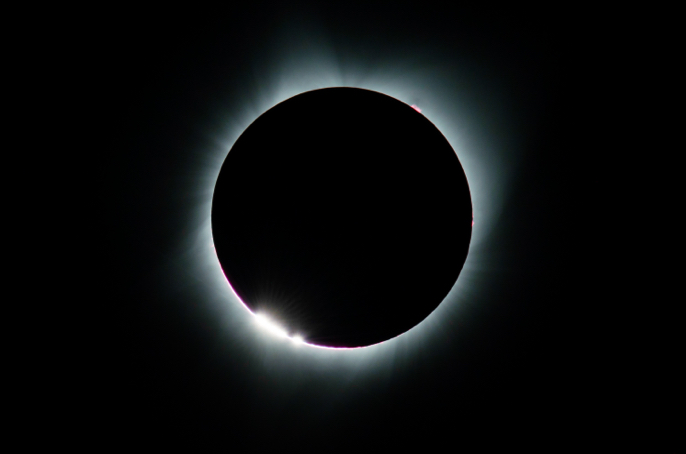

PATH OF TOTALITY
The key to successfully observing an eclipse is choosing the right viewing location. If possible, plan to watch from a location along the path of totality, where the Sun will be entirely covered by the Moon. Those outside the path of the total solar eclipse will simply not have the full experience.
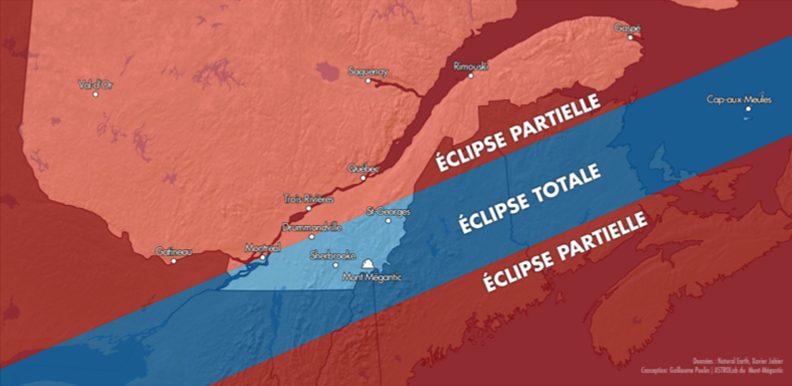

Keep your eyes open
Luckily, when it comes to eclipses, we really can predict the future…
October 14, 2023
If you happen to be visiting the American Southwest, the Yucatán Peninsula or Colombia on October 14, 2023, you’ll be able to admire the ring of fire associated with an annular solar eclipse! In Quebec, this eclipse will be partial and not that impressive, just like the lunar eclipse expected on October 28.
April 8, 2024
Of course, the total solar eclipse of April 8, 2024, is the reason behind this website and the joint efforts of various stakeholders in Quebec’s astronomical community. Don’t miss this opportunity: the next total solar eclipse visible from Quebec won’t be until 2106!
2025
The next partial eclipses will happen in 2025: a lunar eclipse on March 14 and a solar eclipse on March 29.
date – type
EARLIEST ACCOUNTS OF ECLIPSES
For thousands of years, human beings have marvelled at lunar and solar eclipses. These spectacular events naturally took root in the collective imagination. Ancient civilizations that documented eclipses include the Assyrians, Babylonians, Chinese, Egyptians, Greeks, Indians, Mayans, Persians and Sumerians! An understanding of eclipses was seen as vital to the relationship between humanity and the divine. Each civilization appointed its own official skywatchers, who were often priests or priestesses. For those who recognized the periodic nature of eclipses, the next step involved trying to calculate when future ones would occur. Although some were apparently successful in their predictions (Thales of Miletus), there were also stories of failure (the unfortunate Hsi and Ho, who met with the emperor’s wrath). However, it can be hard to know whether such age-old claims are true. In any case, several ancient civilizations managed to interpret some of the principles that govern the timing of eclipses. This is especially true for lunar eclipses, which have been largely understood for millennia. On the other hand, accurately predicting solar eclipses requires a well-developed theory of the motion of celestial bodies.
IMPROVED PREDICTIONS
Relying on Newton’s theory of gravity and Kepler’s laws of planetary motion, astronomers began making much more accurate predictions. By the end of the 18th century, they could usually calculate the exact location and timing of an eclipse. Today’s powerful computers can calculate the details of eclipses for centuries into the future—and the past! This has made it possible to critically assess ancient accounts of eclipses and even correct the dates of events mentioned in historical records. Well-informed astronomers now eagerly await each new eclipse, ready to record as many observations as they can during the event. In 1973, one group of astronomers even borrowed a Concorde supersonic jet prototype to track an eclipse.
